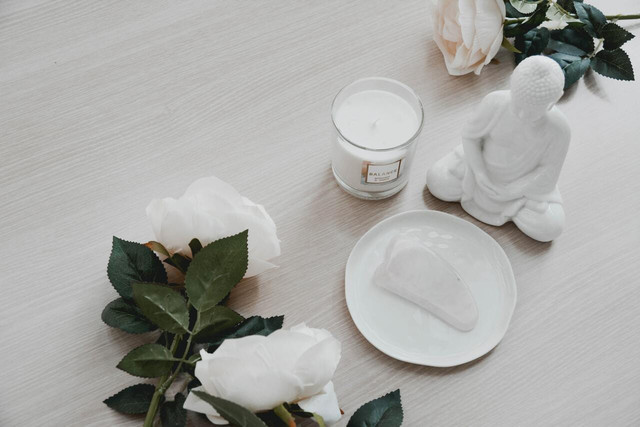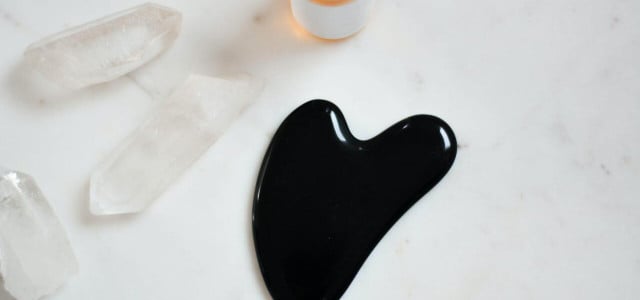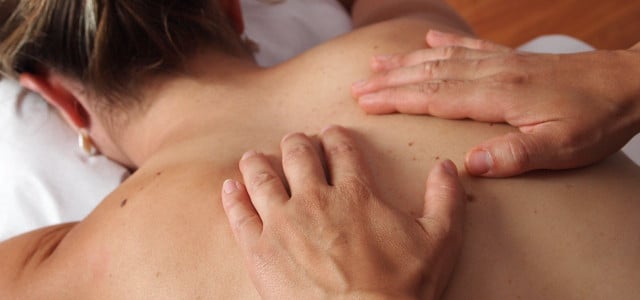Gua sha is reported to help tone your face, but how effective is this form of massage really? Here is our take on the reliability of using a gua sha jawline routine.
Gua sha is a form of massaging that translates to “scrape away illness”. It has been practiced in Traditional Chinese Medicine (TCM) across East Asia for hundreds of years and has recently gained popularity in the United States. This practice is known by a few other names, including kerokan or tribo-effleurage.
If you’re considering adding a gua sha jawline practice to your beauty routine, it’s important that you educate yourself and have realistic expectations. Let’s take a closer look at this ancient practice.
What Is a Gua Sha Jawline Routine?



(Foto: CC0 Public Domain / Unsplash / Viva Luna Studios)
A gua sha massage involves repeatedly stroking and pressing a smooth, blunt object against your skin, particularly your jawline. Although any smooth object can be used for this, it is recommended that a specific gua sha massage stone or roller be used for maximum results. Recently this form of massage has gained popularity as a way to get a more elasticated and supple jawline, with the gua sha technique going viral on TikTok in 2021.
So how does a gua sha jawline routine work? It is claimed that by massaging the underside and contours of your jawline in a direction away from your face, you will encourage microcirculation in your jawline’s soft tissue. This stimulates increased blood flow in that area of your body, leading to a decrease in puffiness, and therefore a tighter jawline.
Gua sha is claimed to also help release tension in your skin and to help with overall anti-inflammation. When treating your skin to this massaging, it is recommended that you apply a facial oil or toner such as neem, grapeseed, or rose water first to prevent any visible markings on your skin.
Is It Actually Effective?



(Foto: CC0 Public Domain / Unsplash / Content Pixie)
Although a fun and relaxing way to massage your jawline and face, the effectiveness of gua sha jawline routines is still up for debate due to a lack of scientific evidence.
In general, this massage technique lacks in-depth research, with most of the scientific investigation of gua sha being directed towards its use to relieve pain and aid muscle recovery, rather than the use of gua sha on the jawline. Gua sha has been similarly reported to damage skin.
Negative side effects reported range from bruising and burns to permanent skin damage. This massage technique should also not be used by people with certain medical conditions such as deep vein thrombosis or anyone taking blood thinning medication.
However, gua sha massaging is not without its uses. There is scientific evidence to support its effectiveness in reducing overall skin puffiness and in helping enhance blood circulation. Additionally, the gua sha technique may be the victim of an unfair reputation. Many of the extreme side effects associated with gua sha massaging are the result of its use alongside fire cupping, or the overuse of harsh massage tools such as coins. In reality, the massages seen on TikTok or Instagram have little chance of permanently damaging or burning your face.
Ultimately, a gua sha massage can be a relaxing addition to your beauty or skincare routine. However, as a method of tightening your jawline, this technique lacks scientific backing.
Read more:
- How to Exfoliate Skin Naturally at Home
- The 5 Best Pressure Points for Sleep
- Herbs for Sleep: 7 Natural Sleep Aids
Important Information regarding Health-related Topics.
** Links to retailers marked with ** or underlined orange are partially partner links: If you buy here, you actively support Utopia.org, because we will receive a small part of the sales proceeds. More info.Do you like this post?








